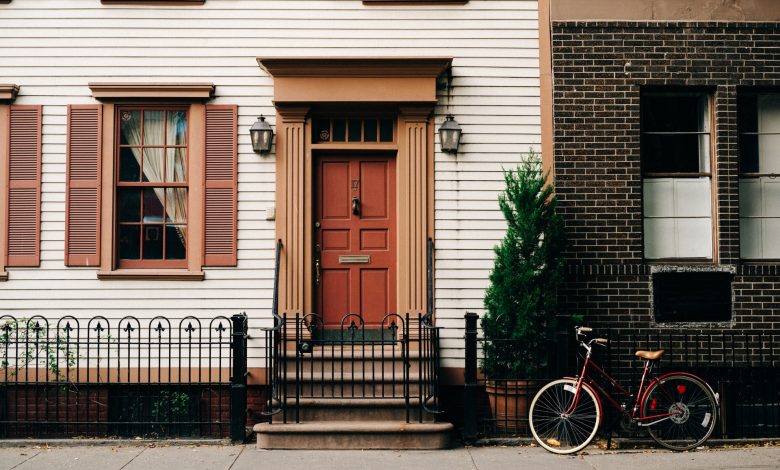Types of Homeowners Insurance Coverage

Some people go through an entire lifetime without being significantly affected by any significant interference with their ownership of a property. There are others, though, that aren’t so lucky. The unlucky ones may end up having their home destroyed or even items stolen from it.
While the items may be easily replaceable depending on what was stolen, destruction of the home is a completely different ball game. That’s because most people who purchase houses don’t do so by paying the seller the entire cost for the house at once. There are many people who are willing and able to do this, but they are not most homeowners.
Most homeowners can’t purchase a home without using an avenue that provides financial help. In many cases, a mortgage is this source of help, and they lean into it very heavily. By funding a house this way, homeownership becomes a more realistic and less burdensome goal to have.
A lending institution that can better afford the house’s cost pays for it on behalf of the homeowner. The homeowner must then repay the lender over a period of years. There’s an agreement established between lender and homeowner that speaks to the amount that is paid back monthly and the applicable interest rate.
This is a payment scheme that is feasible for most people. Now, how does someone who could barely afford to buy a home the first time find the money to own a replacement home if destruction befalls the current one?
There’s no conceivable way for that to happen. This is where homeowners insurance comes into the picture. There are other use cases too, of course. These are covered below, as this article takes a comprehensive look at homeowners insurance and what you should know about the coverage that you’re afforded upon purchase of a policy.

What Is Homeowners Insurance?
Homeowners insurance is one of several kinds of property insurance. Property insurance is an umbrella term that refers to several kinds of policies that provide different areas of protection to a home. Some of these policy types are flood insurance, renter’s insurance, and earthquake insurance.
The idea is that each kind of insurance offers liability coverage plus property protection for homeowners. Whatever the case is, the idea is that, upon the occurrence of certain forms of damage, accidents, or losses, the policy owner should be able to get back to operating normally, as the policy should cover reimbursement and replacement of what was lost.
Please note that these policies are not made to cover every conceivable thing that could happen to a home. However, there is usually an explicit statement of what coverage you’re afforded. Sometimes, there are facets of the policy that you may not readily understand. This is when it becomes very important for you to gain the clarity that you need concerning special circumstances and provisions. Nothing would be more of a pain that being in a detrimental situation and losing the calm that you should have knowing that your insurance company has you covered.
The likelihood is that most of your wealth and your assets are tied up in your home, and you must protect them. In fact, lenders don’t allow you to take a loan from them until you’ve shown that you’ve taken out homeowners insurance. Some of them even go as far as to specify that you need to get hazard insurance.
The inclusion of a clause is to be specific, as you likely already have hazard insurance built into whatever homeowners policy you purchased. Hazard insurance is not an independent insurance type like auto insurance and homeowners insurance are. Instead, it falls under the homeowners insurance umbrella for most policies. If your lender has that requirement, just check with the lender to verify the inclusion.
Once you provide your proof of insurance, then the lender is likely to approve your loan. Of course, this assumes that other requirements, such as an appropriate credit score, are met before you receive the funds that you requested. Many people just get the insurance from the bank that is lending the funds. However, there are others who don’t go that route and prefer to get the funds elsewhere.
It is always recommended that you shop around and see what other lending institutions have to offer. Whatever the case is, ensure that you can prove that there is a policy at play because you don’t want your application for a mortgage to be denied. Note that some banks may take out an insurance policy for you if you haven’t done so. This may seem convenient, since it takes a lot of the legwork out of the equation. You should know, however, that the bank charges you for its involvement in the activity, and the cost is much more than just a processing fee.
Whether the bank obtained the policy for you or you borrowed it yourself from the lending bank, the insurance and mortgage payments are typically rolled into one monthly payment figure. Of course, if you go with a separate entity for an insurance provider, then you’d make your payments separately.
Is a Home Warranty and a Homeowners Insurance Policy the Same?
Many people think that these terms refer to the same thing because their names sound as if the provisions made are similar. A home warranty provides you with an avenue to discounted replacement and repair of the systems and the appliances in your home.
A home warranty tends to be much cheaper since the coverage is so specific, and it also doesn’t last as much time as an insurance policy. A good warranty can be accessed for less than $1,200 annually, which is more of a maintenance cost.
The homeowners insurance, on the other hand, provides a much broader base of coverage, and the cost tends to be more than that of a warranty. Additionally, the insurance policy is active for as long as you maintain it and make the premium payments.

Types of Homeowners Insurance Coverage
The coverage that you get with a homeowners insurance policy covers incidents that fall under four main categories. These are:
- Injuries that occur while on the property
- Damage to or loss of your personal belongings or assets
- Damage to the home’s exterior
- Damage to the home’s interior
The coverage that is allocated is based on the peril that leads to any of these four areas coming into play. There are six types of coverage that collectively address these four areas once the peril is covered. These are as follows.
Dwelling Coverage
This is the main coverage type, and it covers the main structure that is located on the insured property. This main structure is, of course, the building that you occupy as a living space. Built-in fixtures and appliances are also usually covered under this type of insurance. Once the structural integrity of your home, i.e., the foundation, roof, and walls, are disturbed by an accepted peril, dwelling coverage comes into play. Note that your coverage limit tends to be equal to the cost of replacing the home.
Other Structures Coverage
Though you may dwell in the main building of the property, there may be other buildings that exist tpo. Maybe you have a shed, a separate garage, or even a kennel for your dog. These are all counted as additional structures on your property. Protection for these structures is typically valued at 10% of your dwelling insurance coverage.
Personal Property Coverage
This is where your possessions are covered. The coverage includes damage, theft, and loss of these items on your property. There are special cases where coverage is provided, even if the item wasn’t on your property. An example of this is an item that you may keep in a storage space that you have. The coverage afforded here is typically equal to 50% of your dwelling coverage.
Loss-of-Use Coverage
Sometimes a phenomenon occurs that causes you to have to leave your home because it is uninhabitable. While you’re away, you don’t have use of your property, which is an inconvenience to you. Loss-of-use coverage compensates you for the time you need to be away while repairs take place. The idea is to address the living expenses that you must take care of. The value tends to be 20% of your dwelling coverage.
Personal Liability Coverage
If there is a scenario in which you’re legally held liable for personal or property damage to another party, this clause covers the associated cost with the property value or the medical bills that need to be covered for the said party. There is typically a dollar value attached to this coverage, such as $200,000.
Medical Payments Coverage
The purpose of this area of coverage is to cover the medical bills of any guest that becomes injured while on your property. This applies regardless of who is at fault when the incident occurs. A dollar value, such as $5,000, is typically applied to this kind of coverage.
Covered Perils
While the perils covered can differ by policy, here are some of the most common perils that you should be insured for based on the ISO HO-3 policy template that governs most homeowners policies:
- Civil commotion and riots
- Aircraft
- Lightning
- Fire
- Smoke
- Theft
- Vandalism
- Explosions
- Volcanic eruption
- Artificially generated electric disturbances
- Plumbing freezes
- Overflow or accidental discharge of either steam or water
- Falling objects
Uncovered Perils
There are also those perils that are not covered by your policy. Note that many of these perils can be covered by other policies. For example, water damage caused by flooding can be covered by flood insurance if you opt to take out such a policy. Of course, if you live in a flood-prone area, you should make doing so a priority. Some of the most common uncovered perils include the following:
- Nuclear hazards
- Insects, rodents, birds, and vermin
- Local ordinance
- Power failures
- Mischievous acts
- Government orders
- Earth movement
- Water damage
- Wet rot, mold, or fungus
Deductibles
This is the last thing that you need to understand about your policy. Should you file an insurance claim, one of the six coverage types is likely to come into play. Depending on the type, you may be required to pay a deductible.
This is simply an amount that you must pay before the insurance company pays the rest. Deductible amounts are typically a part of the agreement you sign.



